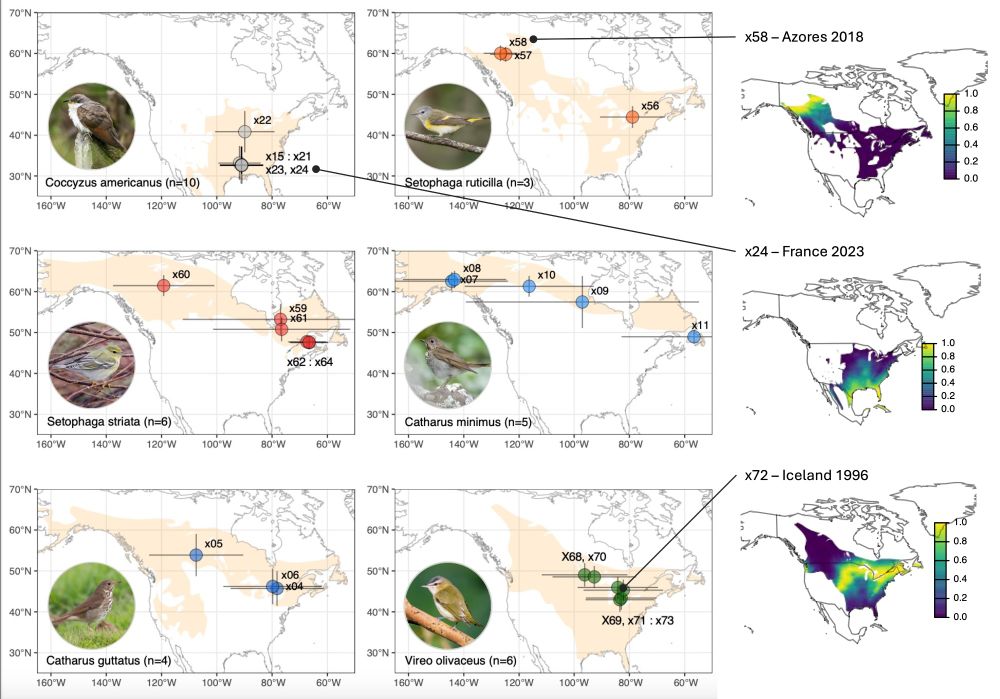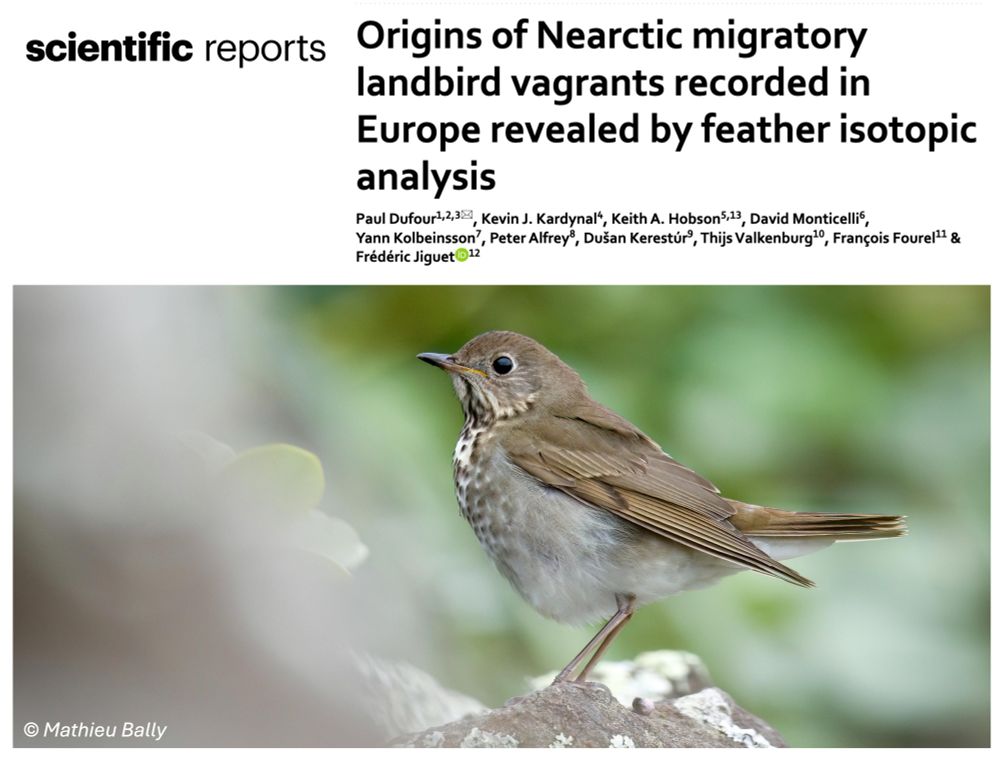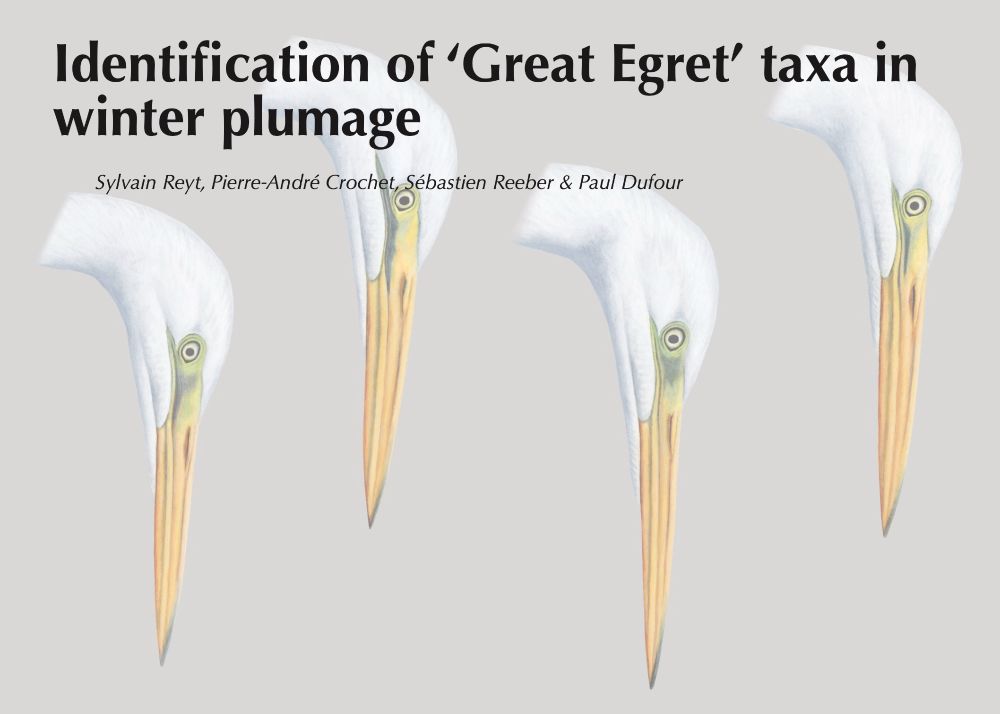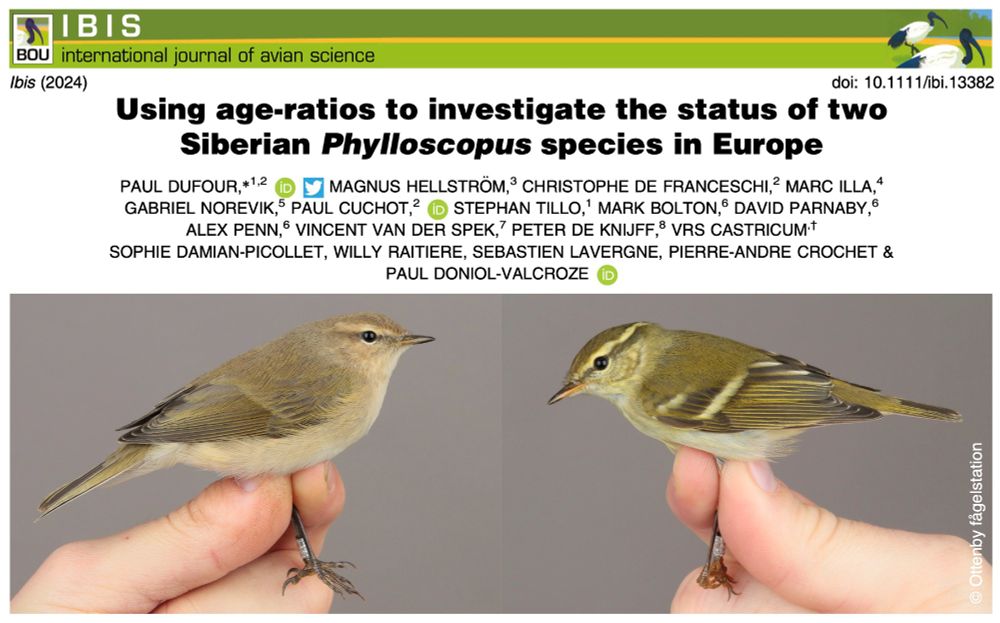
Interested in the evolution of bird movements and how they can influence evolutionary processes
https://pauldufour80.wordpress.com/



A short stay on Corvo finally turned into a long one due to a plane issue for almost a week.. While extra days were slow, first days were exciting: best was finding the 2nd Ruby-crowned Kinglet (8th WP), plus some nice extra species (Cape May, Protho & Magnolia Warblers) 🪶




A short stay on Corvo finally turned into a long one due to a plane issue for almost a week.. While extra days were slow, first days were exciting: best was finding the 2nd Ruby-crowned Kinglet (8th WP), plus some nice extra species (Cape May, Protho & Magnolia Warblers) 🪶
Interested in bird migration & genomics? 🧬🐦
Use whole-genome data to trace the recent colonization of Ouessant Island by Blue Tits and explore how irruptive migratory events can shape colonization dynamics. Please share! #ornithology
www.vogelwarte.ch/de/wir/mitar...

Interested in bird migration & genomics? 🧬🐦
Use whole-genome data to trace the recent colonization of Ouessant Island by Blue Tits and explore how irruptive migratory events can shape colonization dynamics. Please share! #ornithology
www.vogelwarte.ch/de/wir/mitar...










Curious how birds find their way? 🧭🐦
Analyze decades of ringing data to study abnormal migratory routes and uncover what these deviations can reveal about the mechanisms guiding birds on their journeys. Drop me an email for details! #ornithology
www.vogelwarte.ch/de/wir/mitar...

Curious how birds find their way? 🧭🐦
Analyze decades of ringing data to study abnormal migratory routes and uncover what these deviations can reveal about the mechanisms guiding birds on their journeys. Drop me an email for details! #ornithology
www.vogelwarte.ch/de/wir/mitar...
LR4 - Friday 22 - 10:30
@alexanderlees.bsky.social @joewynnbirds.bsky.social #ornithology @vogelwarte.bsky.social

LR4 - Friday 22 - 10:30
@alexanderlees.bsky.social @joewynnbirds.bsky.social #ornithology @vogelwarte.bsky.social



www.nature.com/articles/s41...

www.nature.com/articles/s41...
















